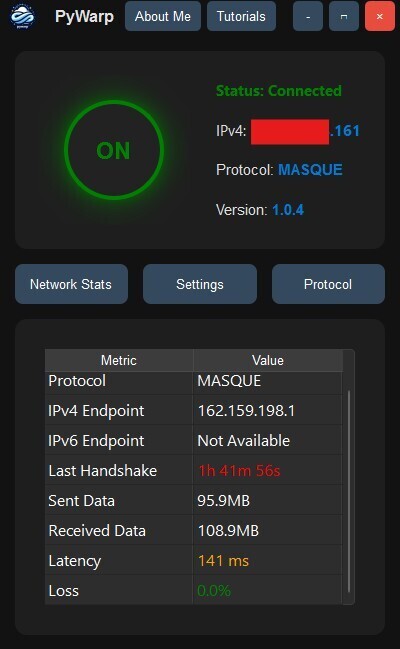Why Threat Modeling Should Be Part of Every Security Program
In today’s hyperconnected business environment, security teams face unprecedented challenges protecting organizational assets against increasingly sophisticated threats. Threat modeling stands out as a structured methodology that helps organizations systematically identify, evaluate, and prioritize potential security threats before they manifest. This proactive approach moves beyond reactive security measures, empowering leadership teams to make informed decisions about […] The post Why Threat Modeling Should Be Part of Every Security Program appeared first on Cyber Security News.

In today’s hyperconnected business environment, security teams face unprecedented challenges protecting organizational assets against increasingly sophisticated threats.
Threat modeling stands out as a structured methodology that helps organizations systematically identify, evaluate, and prioritize potential security threats before they manifest.
This proactive approach moves beyond reactive security measures, empowering leadership teams to make informed decisions about resource allocation and risk management.
By integrating threat modeling into their security programs, organizations gain visibility into both existing vulnerabilities and emerging threat vectors. This creates a foundation for resilient security architecture that aligns with business objectives while satisfying regulatory requirements and stakeholder expectations.
The Strategic Value of Proactive Security Thinking
Threat modeling fundamentally changes how organizations approach security by shifting from reactionary firefighting to strategic planning.
Traditional security programs often respond to threats only after they’ve been discovered, creating an endless cycle of patching vulnerabilities and mitigating incidents.
This approach consumes resources while leaving organizations perpetually one step behind attackers. By contrast, threat modeling embeds security thinking into the earliest stages of business initiatives and technology development.
It empowers leadership teams to anticipate potential attack vectors, understand the business impact of various threats, and establish appropriate controls before deploying new systems or processes.
This foresight not only reduces security incidents but dramatically lowers remediation costs addressing security issues during design phases costs significantly less than fixing them after implementation.
Furthermore, it builds security confidence among customers, partners, and regulators who increasingly demand evidence of systematic security practices before entering business relationships.
Building an Effective Threat Modeling Practice
Implementing threat modeling requires strategic planning and cross-functional collaboration. Here’s how to build a successful practice:
- Start with business-critical assets: Begin by identifying your organization’s crown jewels the systems, data, and processes that would cause significant harm if compromised. This ensures your threat modeling efforts focus first on protecting what matters most.
- Choose an appropriate methodology: Several established frameworks exist, including STRIDE, PASTA, and OCTAVE. Select one that aligns with your organization’s maturity level and security objectives, or adapt elements from different models to create a customized approach.
- Integrate with existing workflows: Threat modeling delivers maximum value when embedded into standard business and development processes rather than treated as a separate security activity. This integration helps normalize security thinking across the organization.
- Cultivate cross-functional participation: Effective threat modeling requires diverse perspectives from business stakeholders, technology teams, and security professionals. This collaborative approach ensures comprehensive threat identification and practical mitigation strategies.
- Document and iterate: Create living documentation of your threat models that evolves as your organization, technologies, and threat landscape change. Regular reviews and updates prevent your security controls from becoming obsolete.
The most successful security leaders recognize that threat modeling isn’t merely a technical exercise but a strategic business function.
By focusing on business impact and risk, security professionals can communicate more effectively with executive leadership and drive appropriate investment in protective measures.
Overcoming Implementation Challenges
Introducing threat modeling often encounters resistance despite its clear benefits. Many organizations struggle with perceived complexity, resource constraints, or difficulty measuring the return on investment for preventative security measures.
Successful implementation requires thoughtful change management and cultural adaptation. Begin by starting small select a pilot project with visible impact and reasonable scope to demonstrate value.
This approach builds organizational confidence and creates security champions who can advocate for expanded adoption.
Training is another critical success factor; security professionals need technical proficiency in threat modeling methodologies, while business stakeholders require enough understanding to participate meaningfully in the process.
Technology teams benefit from practical workshops that connect security concepts to their daily work. Leadership commitment proves essential for sustainable threat modeling practices.
When executives understand threat modeling as a business risk management tool rather than a technical checklist, they’re more likely to allocate appropriate resources and hold teams accountable for results.
Most importantly, threat modeling success depends on creating psychological safety where teams feel comfortable identifying vulnerabilities without fear of blame or criticism. Organizations should:
- Celebrate discovery: Reward teams for finding and addressing potential threats early rather than punishing security gaps, creating incentives for proactive security thinking.
- Measure leading indicators: Track process metrics like percentage of projects with completed threat models rather than focusing exclusively on security incidents, which measure failure rather than prevention efforts.
With patient implementation and executive support, threat modeling transforms from a security initiative into an organizational capability that differentiates your business in an increasingly risk-sensitive marketplace.
Find this News Interesting! Follow us on Google News, LinkedIn, & X to Get Instant Updates!
The post Why Threat Modeling Should Be Part of Every Security Program appeared first on Cyber Security News.



































































![Apple Watch Series 10 Back On Sale for $299! [Lowest Price Ever]](https://www.iclarified.com/images/news/96657/96657/96657-640.jpg)
![Apple Slips to Fifth in China's Smartphone Market with 9% Decline [Report]](https://www.iclarified.com/images/news/97065/97065/97065-640.jpg)
![EU Postpones Apple App Store Fines Amid Tariff Negotiations [Report]](https://www.iclarified.com/images/news/97068/97068/97068-640.jpg)














![What’s new in Android’s April 2025 Google System Updates [U: 4/18]](https://i0.wp.com/9to5google.com/wp-content/uploads/sites/4/2025/01/google-play-services-3.jpg?resize=1200%2C628&quality=82&strip=all&ssl=1)



























































































_Andreas_Prott_Alamy.jpg?width=1280&auto=webp&quality=80&disable=upscale#)





















































































![[The AI Show Episode 144]: ChatGPT’s New Memory, Shopify CEO’s Leaked “AI First” Memo, Google Cloud Next Releases, o3 and o4-mini Coming Soon & Llama 4’s Rocky Launch](https://www.marketingaiinstitute.com/hubfs/ep%20144%20cover.png)












































































































































![[FREE EBOOKS] Machine Learning Hero, AI-Assisted Programming for Web and Machine Learning & Four More Best Selling Titles](https://www.javacodegeeks.com/wp-content/uploads/2012/12/jcg-logo.jpg)






























































































